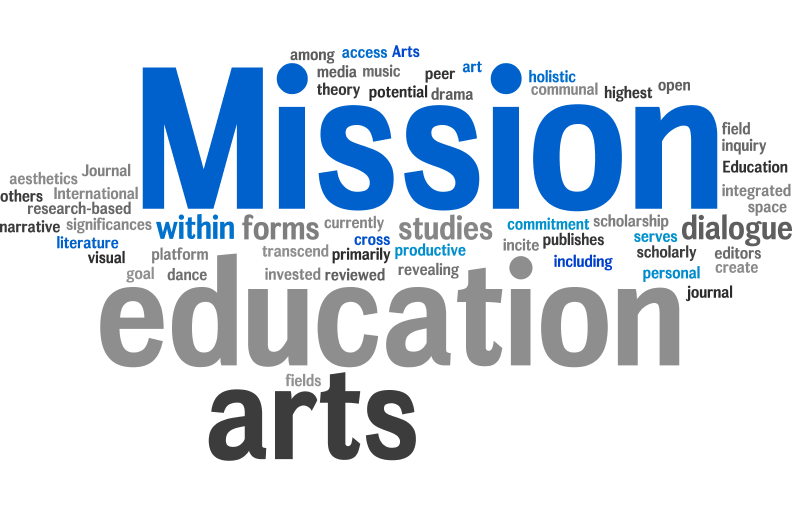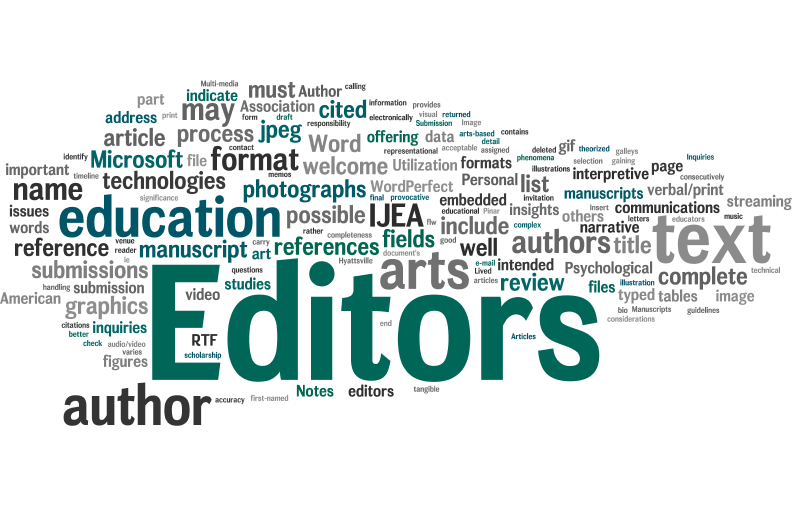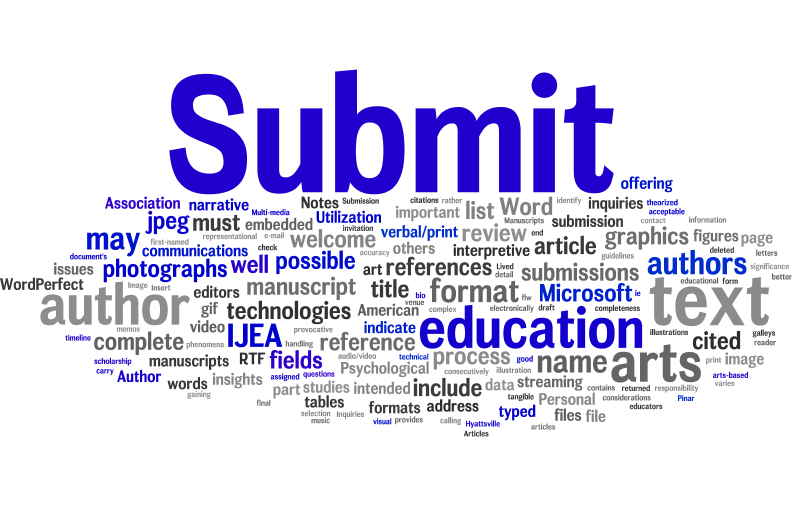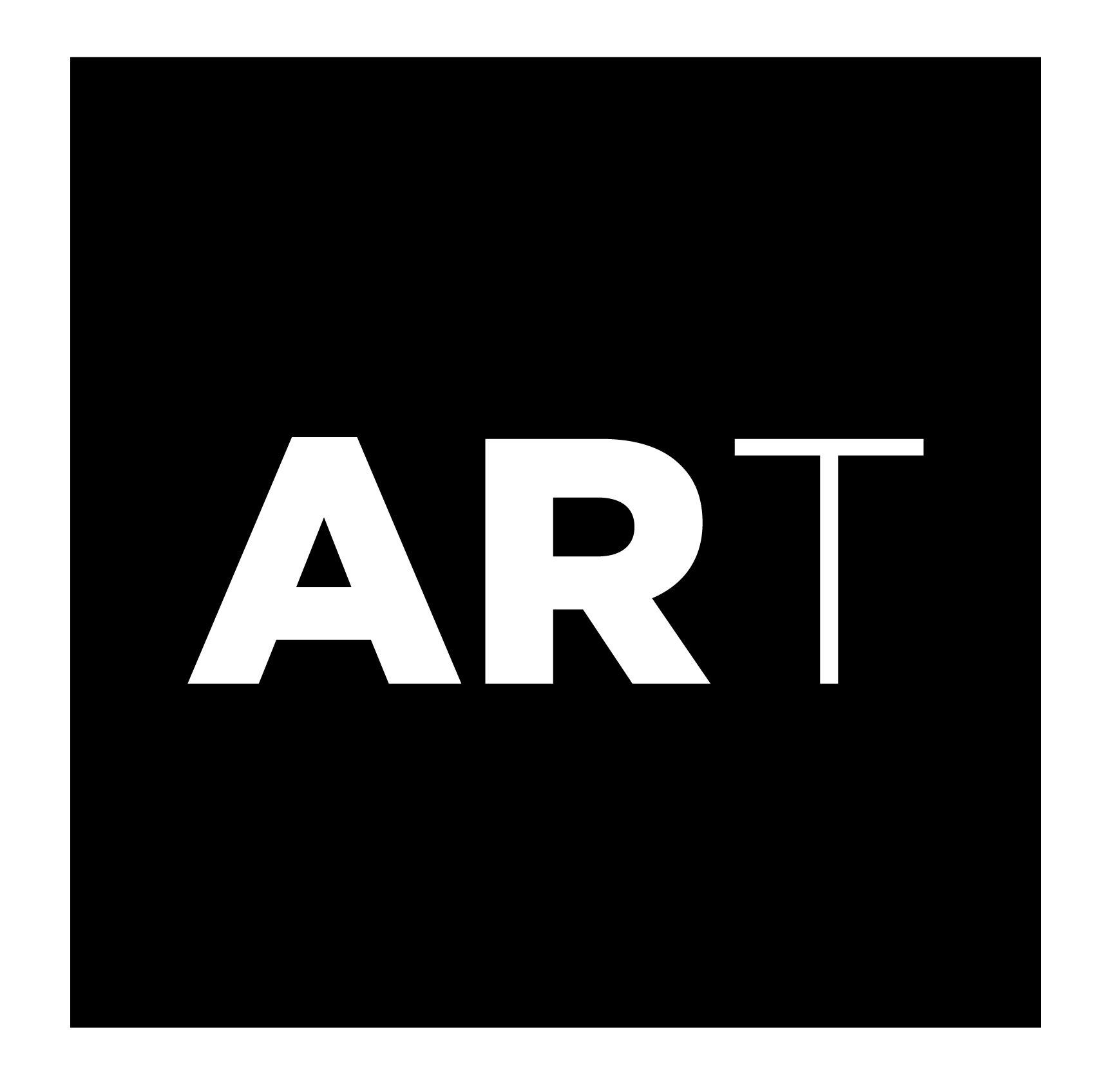2021 Volume 22
Articles and Abstracts

Articles
Volume 22 Number 1: Kan, K. H. (2021). Zoom in on the Get-in-Touch Project and Travel-Study to China.
This article features a creative fabrication project assigned to participants in a short-term education abroad program at a Midwestern state university in the US. The Get-in-Touch assignment merged intercultural research and studio work to enrich and transform participants’ travel experience in China. Several aesthetic stances (mimetic, formalistic, and contextualist) were adopted to interpret the three-dimensional projects documented with photocollages and stories in this manuscript. Travel–study provided a dynamic platform that allowed the four participants to manifest intercultural learning outcomes: making the dissimilar similar, making the unfamiliar familiar, making the familiar unfamiliar and making the similar dissimilar. This article further illuminates the aesthetic stances noted above through the work of four contemporary Chinese artists and offers an indirect glimpse into the art school curricula found in higher education in both cultures. The discussion highlights learned lessons of cultural humility.
Volume 22 Number 2: Corbisiero-Drakos, L., Reeder, L., Ricciardi, L., Zacharia, J., & Harnett, S. (2021). Arts integration and 21st century skills: A study of learners and teachers.
Arts integration and 21st century skills are increasingly relevant to addressing complex student needs in contemporary education. The Creative Classroom Collaboratives: Creativity, Confidence, & Competence (C32) study found that comprehensive arts integration approaches and peer-to-peer professional collaborations between teachers, teaching artists, and cultural partners such as museums, theaters, and arts councils had a positive relationship to students’ achievement and 21st century skill development. By reinforcing criteria that make up the core 21st century skills of creativity, critical thinking, collaboration, and communication, arts integration methods were associated with increases in student learning in a cluster randomized control trial of a study of fourth- and fifth-grade students in two school districts with low socioeconomic status on Long Island, New York. This study includes implications for arts integration in schools, peer professional development and teaching practices, and dynamic partnerships with arts and cultural partners.
Volume 22 Number 3: Chung, S. K., & Li, D. (2021). Issues-Based STEAM education: A case study in a Hong Kong secondary school.
A curriculum that integrates Science, Technology, Engineering, and Mathematics (called STEM education) has been implemented in K-12 schools in the United States for several years. The purpose of this article is to explore the further integration of issues-based art education into STEM education (hereafter-called issues-based STEAM education) to expand the benefits of STEM education for school children. Adopting issues-based art education into STEM education provides students with a more authentic learning experience because its interdisciplinary pedagogy emphasizes inquiry-based, real-world learning, and critical thinking. In this article, we discuss the recent educational movement from STEM to STEAM, followed by an introduction to issues-based STEAM education. We then provide a relevant lesson implemented in a Hong Kong high school to shed light on the significance of issues-based STEAM education and as rationale for the importance of issues-based STEAM education that engages art students by exploring social issues.
Volume 22 Number 4: Wendzich, T., & Andrews, B. W. (2021). Shifting the music education paradigm: What is learned through student/teacher/composer collaborative music composition.
Making Music: Composing with Young Musicians is a multi-year, multi-site research project partnered with the Ottawa-Carleton District School Board and the Canadian Music Centre to commission composers to collaborate with teachers and students (age 11 to 18) to write a piece of music. This article outlines findings on the analysis and interpretation of teacher questionnaires through a pragmatic lens to answer the following question: What do students and teachers learn musically and pedagogically from collaboration with professional composers? This new pedagogical approach of composer/teacher/student collaboration represents a possible paradigm shift–from a traditional teacher-directed approach to one that is creative and interpersonal. The approach is quite beneficial as it highlights the extent to which learning the musical compositional process can be engaging and enjoyable. It also encourages teachers to learn new pedagogical strategies while valuing the creative compositional process. The findings will be of potential interest to music teachers, post-secondary music educators, composers, and music publishers, as the data will help them write/teach/disseminate educational music.
Volume 22 Number 5: Luton, C. (2021). Coaching preservice teachers to integrate the arts in STEM content.
This article explores an innovative strategy for teaching preservice university freshmen to integrate the arts in STEM content. Based on theoretical foundations of brain science, and combined with the author’s 15 years of experience as an elementary school teacher, and an additional 15 years in higher education, this approach represents a conceptual framework that includes coaching teacher candidates to write, teach, critique, and reflect on lessons that integrate the arts, and to effectively use arts-infused lessons throughout their academic program and their own reflective professional practice. This instruction includes early hands-on learning opportunities and experiences, enabling preservice teachers to learn from their own teaching, and the teaching of their peers, by using reflective reciprocal feedback to revise and improve lesson design and teaching skills. Possible implications for more effective educator preparation, arts integration in STEM content, and curriculum design and program development are discussed.
Volume 22 Number 6: Nortey, S., Bodjawah, E. K., & Poku, K. A. (2021). The intellectual legacy of Gold Coast Hand and Eye curriculum and art education in Ghana.
In 1887, the British colonial masters in the Gold Coast implemented an Arts education reform that prioritized the faithful representation of everyday objects in still-life artistic works. This was known as the Hand and Eye curriculum, an Arts education which was geared towards industrialization and functionality rather than innovation and creativity. This study assesses the educational code of 1887, the art during that period, what the legacy offers for creativity in art-making, and how colonialism impacted the Ghanaian art scene. Using a mixed-method approach and drawing on diverse data sources such as audio-visual materials, school visits, archival studies and exhibition histories, the study finds that the intellectual legacy of copying what one sees is still a significant component of the Ghanaian curriculum and educational practice today. While there are examples of exciting developments in Ghanaian artistic education and practice, the country’s basic and secondary art education is still steeped in the still-life paradigm of colonial art-making and education.
Volume 22 Number 7: Foster, V. (2021). Beating time: Methodological questions arising from the evaluation of a school-based arts project.
This article reflects on the evaluation of an innovative educational arts project at a primary school in Liverpool. Based on an animated film version of Janáček’s Cunning Little Vixen, an opera populated by animals, this child-led project was considered to be a successful endeavour. Yet there remain unanswered questions over how this success might be defined and indeed what conventional methods of evaluation research can hope to capture. The article draws on debates from the new wave of childhood studies and considers how some of the recent theoretical and methodological developments in this field, particularly around post-qualitative research, could and should influence the way that evaluation is carried out. Yet there are tensions between the complexities that these developments raise and the intention of evaluation which is to provide straightforward answers.
Volume 22 Number 8: Westerlund, H., Karttunen, S., Lehikoinen, K., Laes, T., Väkevä, L., & Anttila, E. (2021). Expanding professional responsibility in arts education: Social innovations paving the way for systems reflexivity.
This article urges a reconsideration of professional responsibility in arts education, moving beyond an emphasis on narrow technical expertise and strict disciplinary boundaries in order to respond to the needs of complex late modern society. We reconsider ‘professionalism’ in arts education as a site of struggle that requires ‘systems reflexivity’ to engage in the transformation of wider society. By presenting three cases, conceptualised as social innovations in the arts education system in Finland, we illustrate how multi-professional collaboration and systems entrepreneurship, flexible institutional boundary-crossing, and performing social categories in professional education of artists help tackle exclusion and inequalities. We also argue that a degree of activism may be necessary for the field to expand its sense of professional responsibility beyond ‘what is’ towards ‘what could be’.
Volume 22 Number 9: Morawski, C. & Dunnington, C. (2021). Biophilia and visual art education: Two teachers narrate their own connections.
From the remembered moments of observing goldfish glide through water warmed by the afternoon sun, to finding inspiration from a rolling countryside dotted with sheep and lakes, both of us, two teacher educators, have come to reconfirm the integral role that nature plays in the life of our visual art teaching and practices. In this paper, we draw from selected stories of our everyday life to narrate the role that biophilia, affection for plants and other living things, plays in the connections between nature and our own visual art practice to prepare ourselves to facilitate these same connections in teacher candidates. More specifically, we address such considerations as the connections between earlier experiences and our commitment to conserving nature, the integration of the study of biophilia into our visual art teacher education instruction, and the opportunities we present for teacher candidates to explore their own nature narratives in relation to their visual art teaching practices.
Volume 22 Number 10: Berbel, N., Mota, G., & Díaz, M. (2021). Haiku poetry: An innovative approach to contemporary music with primary school children and college students.
This article presents one of the actions of the project titled “Re-inhabiting the Neighborhood: Transformation Processes of Empowerment among University-School-Society through Artistic Practices.” Its aim was to introduce haiku poetry in terms of its potential for vocal exploration through collective musical interpretation. Four workshops took place, two in a primary school, and two with students enrolled in the third year of a graduate program for primary school teachers. Results indicate the potential of this kind of poetry as a learning tool in the approach to contemporary music, encompassing such values as collaboration, group cohesion, and a humane music education.
Book Review
Volume 22 Review 1: Pitsiladis, E. J. (2021). To create: Imagining the good life through music: A review essay.
Book Reviewed: Randles, C. (2020). To create: Imagining the good life through music. GIA Publications.
Clint Randles’ To create: Imagining the good life through music (2020) explores notions of creativity and eudaimonia from the perspective of music and music education. Drawing from several sources, including personal accounts, ancient Chinese philosophy, and the life stories of several musicians, the author argues that we are truly happiest when we create. The book comprises nine chapters, which are organized into three parts: “Life, Music, and the Pursuit of Happiness,” “Making Sense of Creativity,” and “Positioning Ourselves for a Better Tomorrow.” The topic is timely among the burgeoning area of research exploring creativity and eudaimonia in education, and is wholly pertinent to general readers, academics, musicians, and music educators.




